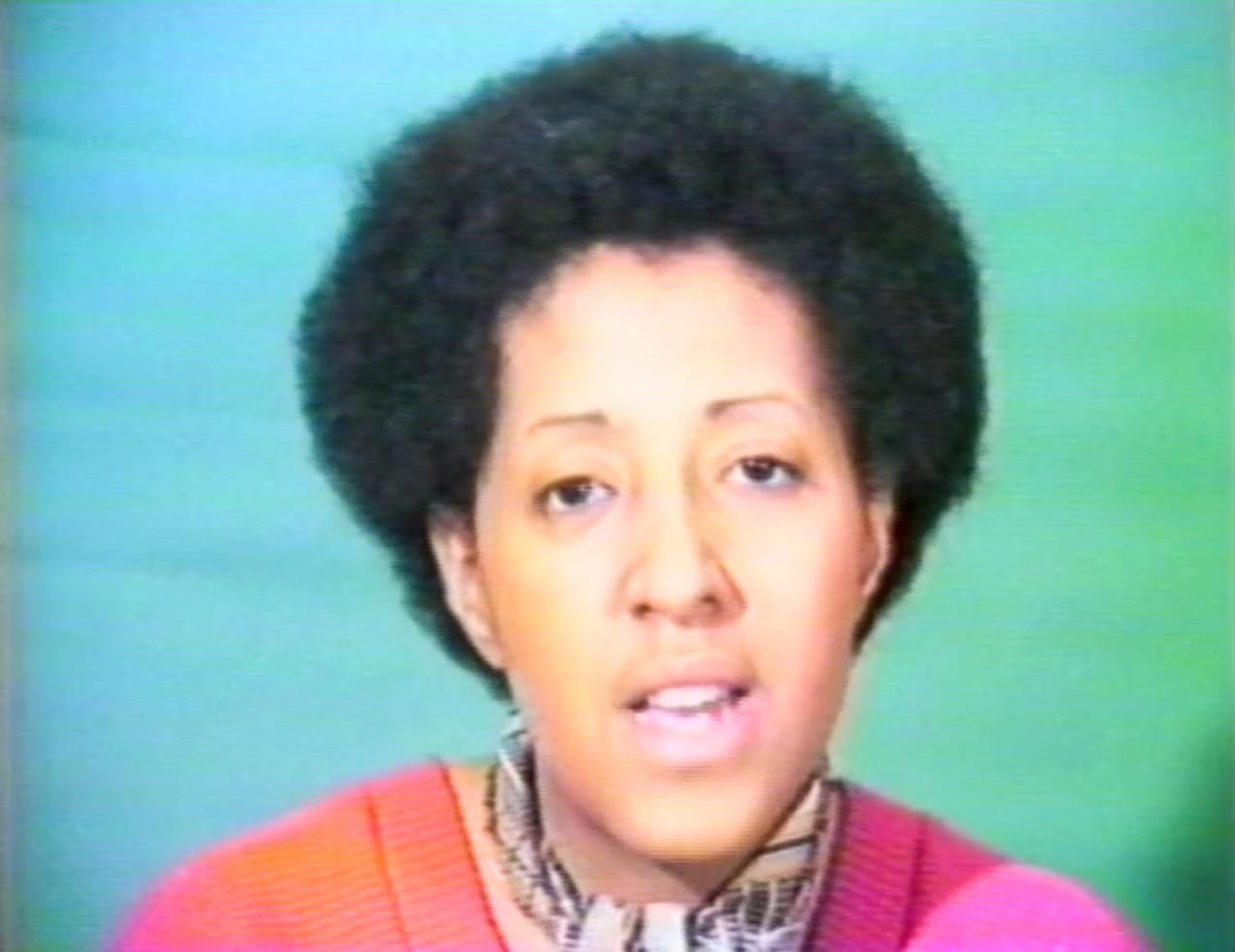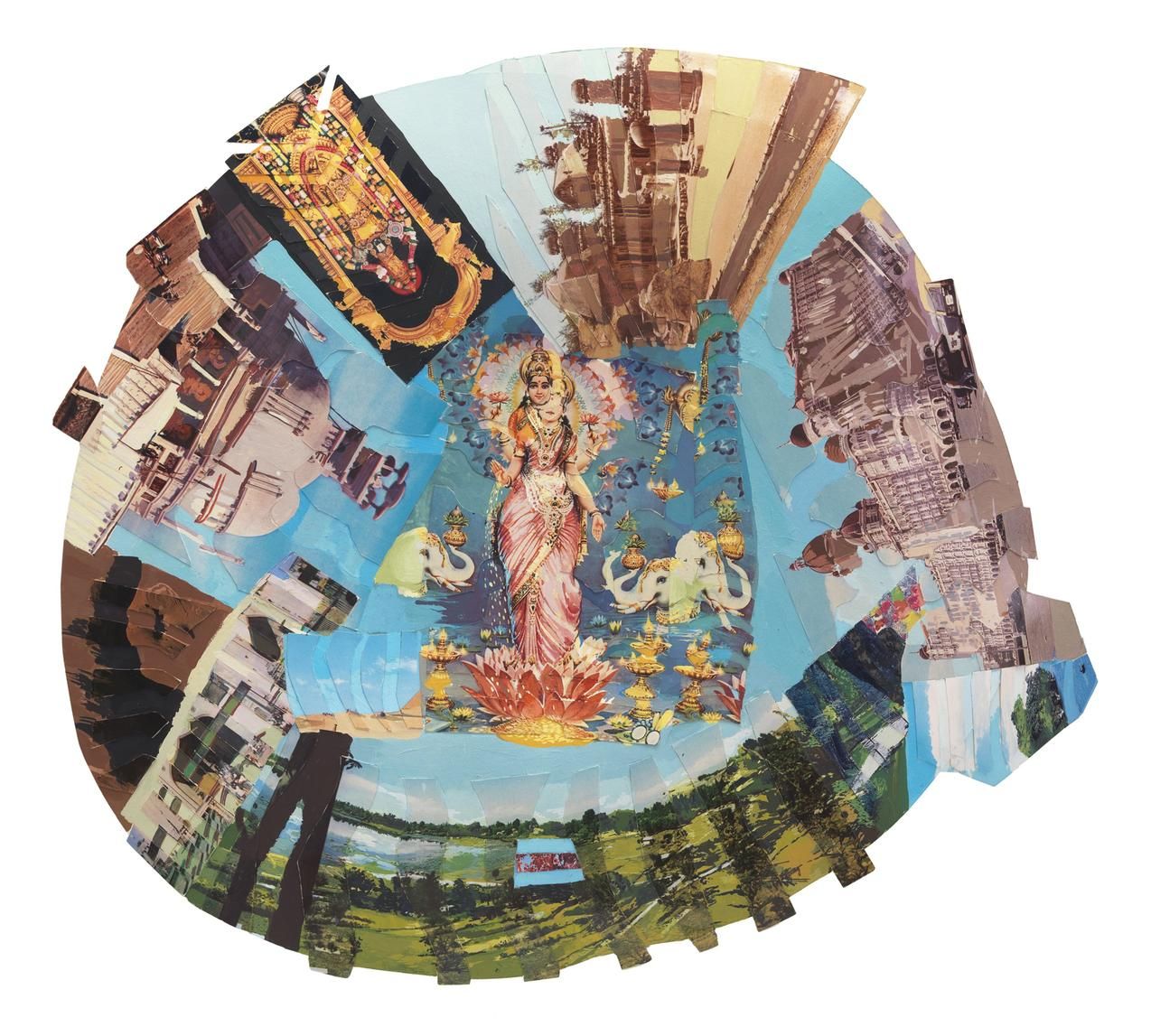Eric Gibson, art critic for The New Criterion and the Arts in Review editor of The Wall Street Journal, joins me to discuss the work of Alberto Giacometti.
Viewing entries in
Art
Howardena Pindell’s ‘Night Flight’ (2015-16) PHOTO: HOWARDENA PINDELL/GARTH GREENAN GALLERY, NEW YORK
THE WALL STREET JOURNAL, September 4, 2018
Seeing Her Worldview in a Circle
Howardena Pindell’s long career defies easy categorization, but a recurring motif connects a childhood memory to much of her work. A review of "Howardena Pindell: What Remains to Be Seen" at the Virginia Museum of Fine Arts, Richmond, Va. Through Nov. 25
The art of Howardena Pindell comes back around to the circle. In “What Remains to Be Seen,” her 100-work retrospective now on view at the Virginia Museum of Fine Arts, there are brushed circles, sprayed circles, and circles punched out of paper. There are paper disks, thousands of them numbered by hand, and the holes from which they were cut. And there are depictions of stars and planets—in her 40s, Ms. Pindell took up the study of astronomy: Orbs of color and light cluster together in dense, spiraling constellations of collage.
In her life, as in her work, Ms. Pindell resists the easy fit. As a black woman, in 1967, she became a pioneering graduate of the Yale School of Art. While continuing to paint, she joined New York’s Museum of Modern Art as its first black female curator. “We owe our vocation as career curators to the trail blazed by Pindell,” write this exhibition’s organizers, Valerie Cassel Oliver of the VMFA and Naomi Beckwith of the Museum of Contemporary Art Chicago, where the show originated. (On Jan. 24, 2019, the exhibition will open at Brandeis University’s Rose Art Museum in Waltham, Mass.)
With her wide-ranging style and broad use of materials, Ms. Pindell has long been a round peg in a square hole. Enigmatic at times, didactic at others, she is an innovative abstractionist who also works in photography and video.
Howardena Pindell’s ‘Untitled #5B (Krakatoa)’ (2007) PHOTO: HOWARDENA PINDELL/GARTH GREENAN GALLERY, NEW YORK
Ms. Pindell, now age 75, says the recurring motif of the circle, connecting much of her art, goes back to a childhood memory. While traveling with her father—a mathematician who influenced her own interest in statistics—she stopped at a root-beer stand and looked down at the red circle painted on the bottom of her mug. The symbol designated the mugs for use by blacks only. “I see that as the reason I have been obsessed with the circle,” Ms. Pindell recounts in the exhibition catalog, “using it in a way that would be positive instead of negative.”
Howardena Pindell in her ‘Free, White and 21’ (1980) PHOTO: HOWARDENA PINDELL/GARTH GREENAN GALLERY, NEW YORK
In Richmond, where this exhibition is divided between two sections at opposite ends of the museum, the show opens in a gallery that follows Ms. Pindell’s circular developments on canvas. In her early paintings, such as “Space Frame” (1969), circles appear to orbit in square grids. By the early 1970s—for example in a canvas recently purchased by the VMFA—the circles have become dots, sprayed through the holes of handmade templates, while the hole-punches themselves reappear as dappled chads pasted on the canvas
surface.
Howardena Pindell’s ‘Autobiography: India (Lakshmi)’ (1984) PHOTO: HOWARDENA PINDELL/GARTH GREENAN GALLERY, NEW YORK
In 1979, Ms. Pindell’s art pivots around two events: her departure from MoMA for a professorship at Stony Brook University, where she continues to teach today, and a serious car crash that affected her memory and sight. Politics, once sublimated in her abstractions, bubbles up to the surface. Words and images appear in her compositions with increasing stridency. Her canvases, now left unstretched, are cut up and stitched back together.
Howardena Pindell’s ‘Untitled #58’ (1974) PHOTO: JK BROWN AND ERIC DIEFENBACH, NEW YORK
While the first section of this exhibition displays Ms. Pindell’s range on canvas, the second shows her diversity of media. Here, works on paper are encrusted in shimmering material. Watercolor, gouache, crayon, ink, punched papers, spray adhesive, and thread may appear in a single composition. Collages made out of postcards from her many travels are cut into mesmerizing designs. Meanwhile, a suite of video work demonstrates the range of her art. In the mid-1970s, and again in 1988, Ms. Pindell took photographs of her television set, which she appended with cryptic notations on sheets of acetate adhered through static to the screen. “Free, White and 21,” a harrowing 12-minute video performance piece of 1980, speaks to her work’s confessional turn, as her biography became her subject matter.
Howardena Pindell’s ‘Space Frame’ (1969) PHOTO: HOWARDENA PINDELL/GARTH GREENAN GALLERY, NEW YORK
“Things cycle back around in Pindell’s work,” note the co-curators of this exhibition. While it may have complicated her career, her art’s nonlinear progression speaks to her aesthetic independence and suits the divided arrangement of this show. I could have used a trail of chads to connect the two sections, but a walk through the VMFA’s encyclopedic collection hints at the many sources of Ms. Pindell’s elliptical art, from Washington Color School painting to African textiles. As her latest works at one end of the museum—swirling abstractions such as “4C the Planets” (2007) and “Night Flight” (2015-16)—recall her earliest paintings at the other, we see her art come full circle.
THE WALL STREET JOURNAL
Shimmering Black History Brought to Life
A native son of Chicago, Charles White was a radical political progressive with a retrograde artistic talent. A review of ‘Charles White: A Retrospective’ on view at the Art Institute of Chicago through September 3, 2018.
Chicago
Born on this city’s South Side, Charles White (1918-1979) was already a star of the Black Chicago Renaissance, a Midwestern version of the Harlem Renaissance, by his early 20s. At the time, the artist kept a sketchbook that is one of the first objects in his illuminating retrospective—his first major show in over 35 years—now open at the Art Institute of Chicago. That small book can be easy to miss, but it is worth close inspection.
White’s prodigious talents are already manifest in these pages. Here are studies ranging from the dancers of Degas to the statues of the Baule, a people of Ivory Coast. Here are confident drawings in charcoal, pastel, ink, graphite, pen, and watercolor. Here is a portrait of Langston Hughes that includes “his autograph,” as White annotates with an arrow. And finally here are White’s own “theories on teaching art,” where he writes: “Learn to draw the figure, to compose and express ideas clearly, dramatically. Style will come by itself as a matter of course.”
White emerged at a moment of foment in 1930s black Chicago. His challenge was finding the style that best represented the struggles of African-Americans and the working class, and pursuing it in an era increasingly estranged from the craft of illustration. With a lifelong focus on draftsmanship, which also included astonishing achievements in printmaking, White was a radical progressive with a retrograde talent.
Charles White’s ‘Sound of Silence’ (1978) PHOTO: THE CHARLES WHITE ARCHIVES INC./
Curated by Sarah Kelly Oehler of the Art Institute and Esther Adler of the Museum of Modern Art, “Charles White: A Retrospective” highlights the connections among his roots, his ideas and his art. A map in the exhibition includes points of interest that stretched from his South Side home to the main branch of the Chicago Public Library, where his working mother often deposited him as a child. Here, through books such as Alain Locke’s “The New Negro,” White first engaged with the neglected storylines of black America.
This native son attracted early acclaim in Chicago. White went from a Saturday scholarship student at the Art Institute at age 13 to major commissions for murals of black history in his 20s. When the State of Illinois sponsored the “American Negro Exposition” to celebrate the 75th anniversary of the 13th Amendment in 1940, White’s drawing “There Were No Crops This Year,” a swirling graphite illustration of two downcast figures holding an empty sack, received top prize.
Charles White’s ‘Our Land’ (1951) PHOTO: THE CHARLES WHITE ARCHIVES INC.
White created cycles of visual mythology out of black American history. Take, for example, his mural commissioned for Virginia’s Hampton Institute and completed in 1943 showing the “Contribution of the Negro to Democracy in America.” This packed composition inspired by Diego Rivera’s Detroit Industry Murals (and shown here only in reproduction) includes numerous historical figures led by an avenging angel fighting against the anti-democratic forces of bondage. White’s studies for the work depict Denmark Vesey and Paul Robeson as luminous figures in pencil, their faces seeming to reflect light as though rendered in metallic relief. A similar study of Sojourner Truth and Booker T. Washington reveals White’s sensuous all-over line, seen in the wood grain above Washington’s head and in the folds of Truth’s headscarf.
Charles White’s ‘Black Pope (Sandwich Board Man)’ (1973) PHOTO: THE CHARLES WHITE ARCHIVES INC./
White’s talents brought him from the heartland to the coasts. He became immersed in the Harlem Renaissance and then the worlds of black and blacklisted Hollywood. In 1965 he took an influential teaching position at the Otis Art Institute, which he held for the remaining 14 years of his life. By traveling to New York’s Museum of Modern Art in October, and then to the Los Angeles County Museum of Art in February 2019, “Charles White: A Retrospective” will follow the artist’s personal migration.
But White never changed political direction. His worldview spanned the Old Left of the 1930s and the New Left of the 1960s and ’70s. A journey in 1951 to the Soviet Union even included a special trip to the Republic of Georgia to visit the birthplace of Joseph Stalin. The sojourn exposed him to Socialist Realism and upended his own style, which thereafter became more rounded and naturalistic, focused less on historical figures and more on contemporary images of work and toil. A later turn to collage-like compositions, borrowing neo-Dada tropes and Surrealist symbolism, connected his final work to Afrofuturism and the Black Arts Movement.
One might wonder where White’s talents would have taken him had his interests in black experience not become enmeshed in class politics. Nevertheless, just as White gave vision to black history, so is art history rightfully rediscovering White’s vision. “I try to find and search for answers to three questions,” he said in 1971. “Who am I? What am I? Why?” Thanks to this probing exhibition, we can follow his search.
(June 27, 2018)











